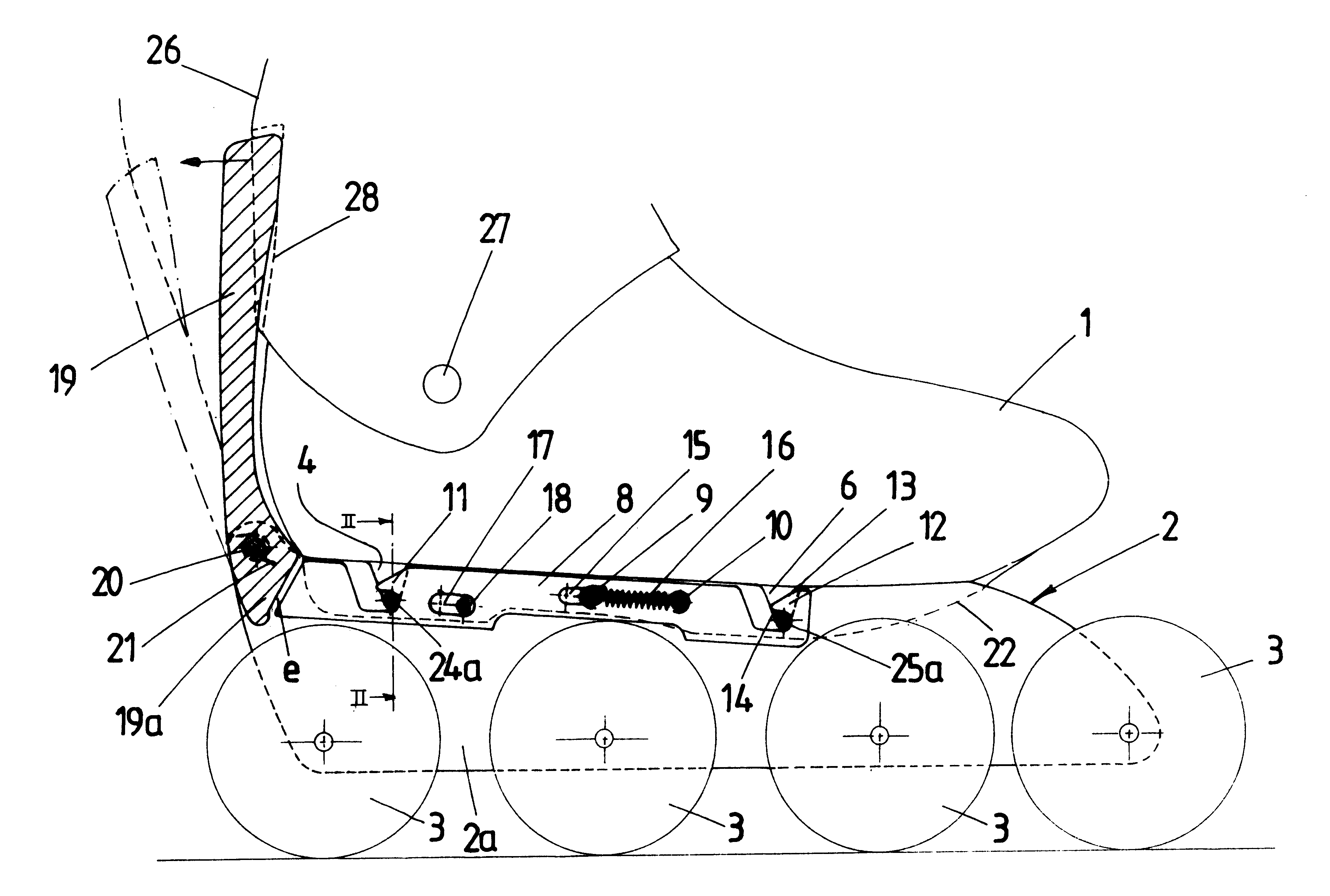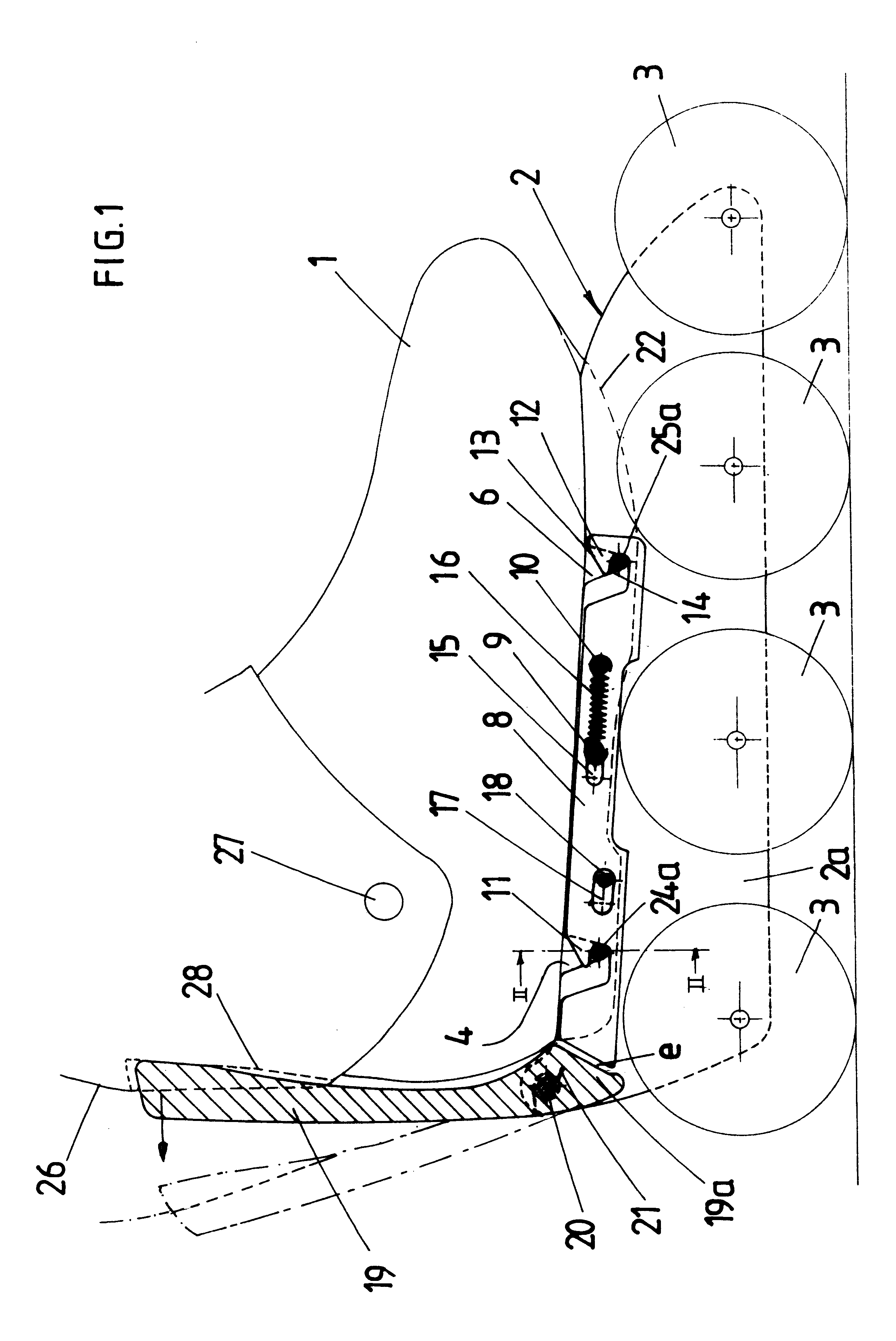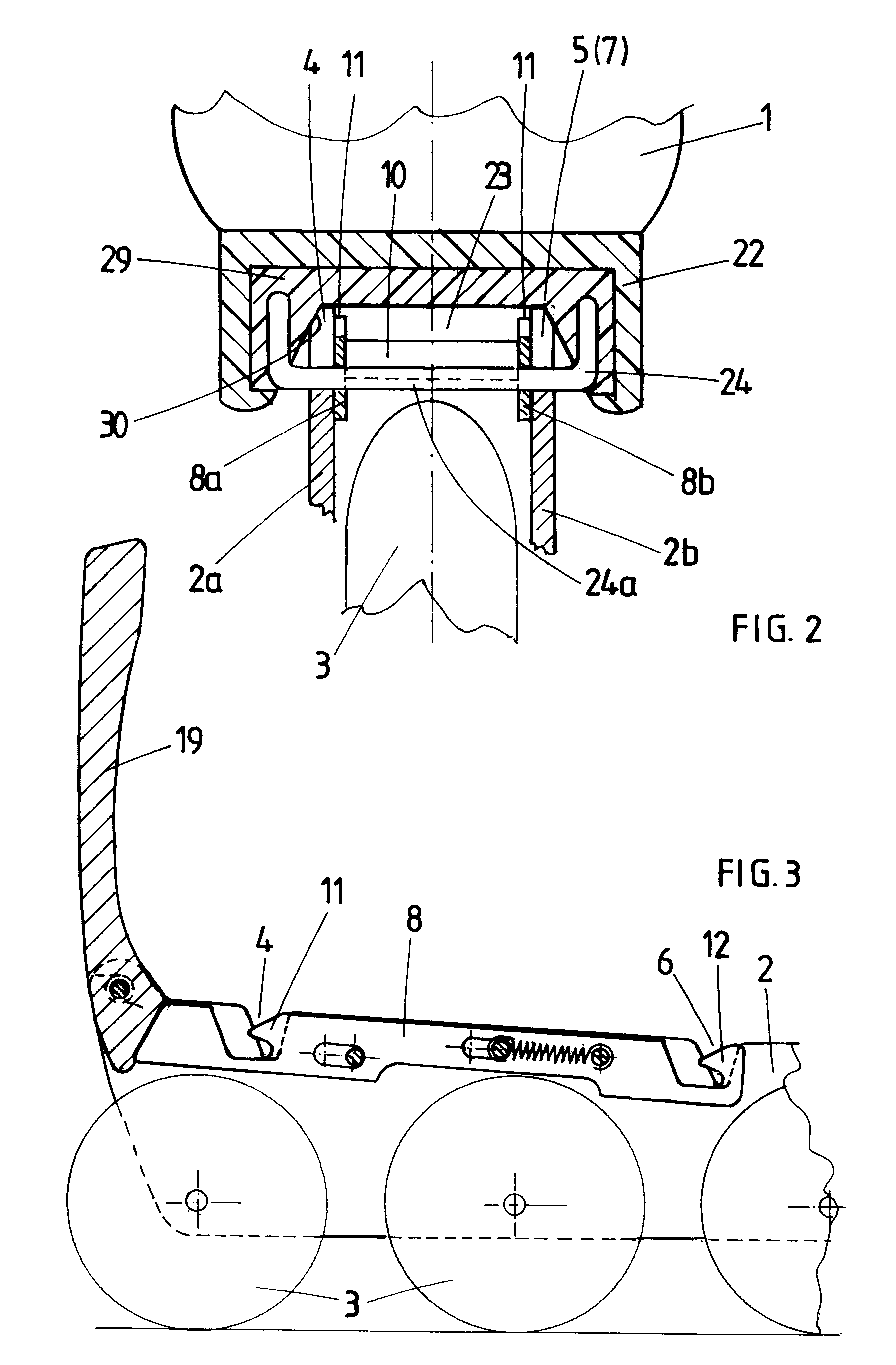Roller skate with removable boot
a roller skate and boot technology, applied in the field of roller skates with removable boot, can solve the problems of affecting the stability of the boot, and the lack of longitudinal play in the locking, etc., and achieves the effects of simple, robust, and easy opening
- Summary
- Abstract
- Description
- Claims
- Application Information
AI Technical Summary
Benefits of technology
Problems solved by technology
Method used
Image
Examples
first embodiment
In the alternative form depicted in FIG. 4, the parallel plates 8a and 8b constituting the latch lie on the outside of the chassis, against the outer faces of the walls 2a and 2b of the chassis. As in the first embodiment, the plates 2a and 2b are connected by a spacer piece 10 which passes this time through the walls 2a and 2b of the chassis through two slots which allow the latch to move. The plates 8a and 8b are also guided by shoulders 31 which extend over at least part of the length of the chassis.
The catching pieces secured to the chassis consist of C-shaped metal components 32 embedded in the inserts 29. The two ends of the component 32 form two tenons 33, 34 which engage in the notches 4 to 7 of the chassis and in the latch. These tenons 33 and 34 do not project or project very little into the chassis, which means that space for rollers or for housing a brake becomes free.
The plates 8a and 8b of the latch could just as well be guided, on the one hand, from below, by bearing ...
second embodiment
A second embodiment will now be described with reference to FIGS. 8 to 10.
In order to avoid a multiplying of reference numerals, the chassis 2 and the unlocking lever 19 have been denoted by the same reference numerals as were used in the first embodiment, despite the differences in shape which may be observed. The same is true of the V-shaped notches 4 and 6.
This embodiment also comprises a catching and locking element common to the four catching points. This catching element consists of two parallel rods 40 which will hereafter be referred to by the expression latch for reasons of simplicity. This latch 40 is mounted so that it can slide longitudinally in the chassis 2, in which it is guided between, on the one hand, two spacer pieces 41 and 42 of the chassis and, on the other hand, three crossmembers 43, 44, 49 of this same chassis. The latch 40 is equipped with two hooks 45 and 46 which are intended to retain and lock the tenons 24a and 25a of the boot. The rear end of the latch...
third embodiment
The third embodiment depicted in FIGS. 14 to 16 can be distinguished from the previous embodiments by the presence of distinct catching and locking elements or latches for attaching the front tenons and attaching the rear tenons of the boot.
As depicted diagrammatically in FIG. 14, catching and locking is achieved by two latches 61 and 62 working in opposite directions. These latches are produced in identical ways, which means that a detailed description of just the latch 61 will be given, remembering that this latch may consist of a single piece or of two identical pieces, one for each tenon of the boot, for example. The latch 61 is in the shape of a .GAMMA. articulated to the chassis about an axle 63 and the upper part of which forms a nib 64. This latch has a lateral post 65 which engages in a notch 66 of a catch 68 forming a lever of the first kind which, at its fulcrum, has a cylindrical cutout 69 via which this lever rests against a cylindrical boss 76 of the chassis 2 which ac...
PUM
 Login to View More
Login to View More Abstract
Description
Claims
Application Information
 Login to View More
Login to View More - R&D
- Intellectual Property
- Life Sciences
- Materials
- Tech Scout
- Unparalleled Data Quality
- Higher Quality Content
- 60% Fewer Hallucinations
Browse by: Latest US Patents, China's latest patents, Technical Efficacy Thesaurus, Application Domain, Technology Topic, Popular Technical Reports.
© 2025 PatSnap. All rights reserved.Legal|Privacy policy|Modern Slavery Act Transparency Statement|Sitemap|About US| Contact US: help@patsnap.com



